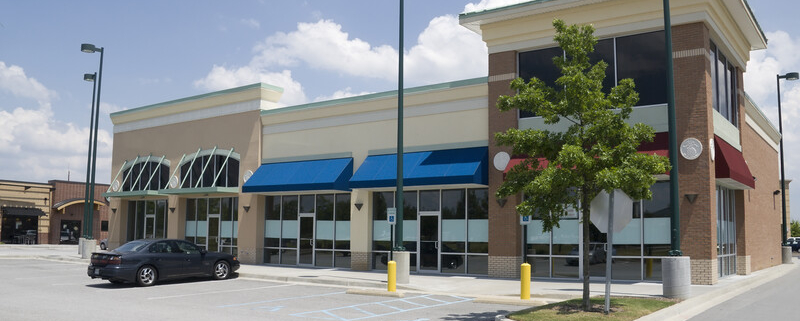Retail appears to be replacing multifamily when it comes to commercial real estate darlings.
Shopping center vacancy in Q4 reached its lowest level dating back to 2007 – just one among the sparkling highlights according to Cushman & Wakefield research.
Asking rents for shopping centers rose broadly nationwide by 0.8% quarter-over-quarter (QoQ) to an average of $22.99 per square foot, while the vacancy rate declined 20 basis points to 5.7%.
Net absorption accelerated to a pace of 10.9 million square feet (msf), up from the mid-year lull where absorption averaged 9.4 msf over the second and third quarters, but down from 12.9 msf in Q4 2021.
Retail Fundamentals ‘Have Not Yet Flinched’
Barrie Scardina, executive managing director and head of retail services, Cushman & Wakefield, shared in prepared remarks, “The economic backdrop has become highly uncertain over the last several months, with retailers preparing for more challenging conditions in 2023, yet retail fundamentals have not yet flinched.
“Consumer behaviors remained healthy to close out the year: shopping mall foot traffic exceeded 2019 levels in the final two weeks of December, and holiday sales are expected to have been modestly positive. Inflation continues to be a concern for shoppers and retailers, though the rate of price increases moderated in recent months.
“Retailers seem to be confident enough that inflation and a probable recession in 2023 will not be overly disruptive to business; store openings in 2022 outpaced closures by nearly 2,500—the largest net expansion in a decade. In addition to resilience in core retail, consumer services such as medical, entertainment and dining are bolstering retail real estate demand more than they have in past economic cycles.”
Positive net absorption was found in 66 of the 81 markets tracked by Cushman & Wakefield with Chicago (1.0 msf), Phoenix (788,000 sf), Atlanta (574,000 sf), Denver (422,000 sf), Washington, D.C. (397,000 sf), Dallas/Fort Worth (392,000 sf) and New York City (353,000 sf) leading the way.
Philadelphia, Hartford, Buffalo, and Albany each saw a net decline in absorption, as did a handful of secondary markets in the South and West regions.
Retailers Still Adding New Locations
James Cook, Americas director of research, retail, JLL, tells GlobeSt.com that total vacancy had fallen to 4.2% in Q4 2022.
“While such a low vacancy might come as a surprise to some, it shouldn’t,” Cook said. “That’s because many retailers are still adding new locations. After seeing significant retail move-outs in the second half of 2020 there’s been broad demand for retail real estate across a variety of retail categories.
He said that demand has been especially strong from quick-service restaurants and discount retailers in suburban areas. Meanwhile, new construction of retail real estate has been at historic lows.
A steady demand combined with a waning supply has caused falling vacancy,” Cook said. “And all of this has driven up asking rents in nearly every major US market.”
Asking, Effective Rent Spikes Most in Over a Year
Asking and effective rents grew by 19 and 21 basis points, respectively, in Q4, according to Moody’s Analytics, the most growth they have shown in over a year.
Meanwhile, the national retail vacancy rate remained flat at 10.3% — the sixth straight quarter at this level.
“Although these numbers might not jump off the page, this increase breaks a four-quarter streak of asking rent growth that was 0.10% or less and could possibly be the momentum needed to push performance higher in subsequent quarters,” according to the report.
However, data shows foot traffic during the holiday season was down year over year in retail segments like apparel and electronics. Also, US spending on discretionary merchandise fell 5 percent during the week of Dec. 10 from a year earlier, as rising costs forced consumers to be more selective in how they spent their money, Moody’s Analytics reported.
Opportunities that Didn’t Exist in the Past
Matt Hammond, Partner, Coreland Companies, tells GlobeSt.com that demand for second-generation retail in grocery store-anchored shopping centers is as strong as ever.
“Despite the closures, we had to navigate during the pandemic, retailers who were well capitalized adapted and positioned themselves for growth,” Hammond said. “During the past 24 months, we have seen tremendous opportunities for these retailers to lease spaces that weren’t available in the past.
“We’re also dealing with limited inventory today given that ground-up development of traditional shopping centers has declined due to rising land, construction, and capital costs.
Limited inventory drives vacancy rates down and rents up. The increased cost of construction has also been a key factor driving rents. Amortized into a deal is a landlord’s tenant improvement allowance, directly affected by the increases in construction.”
He said that physical, service retail is a necessity and that even many strictly digital brands eventually come to realize that a physical store is part of the shopping experience.
“We expect to see continued positive rent growth and low vacancy into the new year as newcomers remain eager to enter the market and existing retailers take advantage of key opportunities,” Hammond said.
Simon Property Group Redeveloping Former Big-Box Stores
Laura Schwartz, regional vice president of leasing for Simon Property Group, tells GlobeSt.com that across Simon Property Group’s centers, she is seeing an uptick in foot traffic to levels that resemble those of pre-pandemic times.
“To combat vacancy and keep up with this demand, we’ve worked tirelessly to redevelop previously occupied large box stores by building out multiple retail and experiential spaces at affordable rent rates,” Schwartz said.
At Burlington Mall, the end of one wing has been completely revamped to now be occupied by Common Craft, a food and beverage destination drawing locals for craft beverages and local food, as well as the nationally recognized Fogo de Chao.
“Implementing a mix of retail, experiential, and food & beverage tenants means there is more than one draw to our centers than retail alone, opening up our potential tenant pool wider and allowing us to combat vacancy,” Schwartz said.
Experiential Retail Performing Well
Brandon Svec, National Director of U.S. Retail Analytics, CoStar, tells GlobeSt.com that retail vacancy has continued to compress due to both demand and supply side factors.
“A resurgence in experiential retail leasing, coupled with continued expansion from discounters, off-price retailers, and quick-service restaurants has supported strong demand formation,” he said.
“On the supply side, deliveries and starts remain at anemic levels, especially after accounting for the large share of build-to-suit projects.
“Further, demolitions continue at an active pace, helping to remove obsolete stock from the market. Add the fact that retail space impacted by store closures fell to its lowest level in over 15 years and you have the recipe for a very tight market.
“The one outlier has been office-dependent street-level retail within the urban core, which continues to significantly underperform the wider market.”
Discount Retailers Gobbling Up Space
Daniel J. Villalpando, partner, Cox Castle, tells GlobeSt.com that the overall decrease in vacancy rates is likely driven by the “categories” of community and neighborhood centers, power centers, and unanchored strip centers, with the best rates (not surprisingly) typically in Class A projects and projects in the suburbs.
On the contrary, the mall category continues to struggle a bit with vacancies. There has not been much new shopping center development in the last few years, so the amount of inventory has stayed flat, or even decreased. Less inventory can mean lower vacancy rates.
Data indicates retail chain closures decreased in 2021 and announced closure plans for 2022 were low, so retailers are continuing to occupy their premises, for the most part.
Some developers are filling vacancies (particularly of the department store and “big box” varieties) with offices, ranging from call centers to high-tech spaces; distribution and industrial centers; movie stages; and data centers.
Other “experiential” uses such as pickleball courts, golf-themed spaces such as Puttshack, Puttery, and Popstroke, and bowling alleys like Stars and Strikes and Main Event are becoming viable options for retail developers with large spaces to fill. These new tenants bring down vacancy rates.
When there are vacancies, discount retailers and dollar stores such as Dollar General, Family Dollar, Dollar Tree, and Five Below have gobbled up residual space, often in the 5,000- to 10,000-square-foot range.
Grocery-Anchored Development in Demand
Brett Horowitz, partner at Branch Properties in Atlanta, tells GlobeSt.com for his more recent grocery-anchored developments, he continues to see unprecedented tenant demand.
Over the last two years, our developments have been on average, at least 90% pre-leased at the completion of construction. Historically, pre-leasing at this point had hovered around 75% to 80%.”
“We believe a combination of factors including a lack of new retail construction, a larger pool of tenants seeking traditional retail space (i.e. medical tenants), and a larger desire for retailers to be closer to the rooftops in more suburban settings are the reasons for this,” he said.
“These are trends that only accelerated from the pandemic. This historic level of retail occupancy will continue to push rents as well as overall investor appetite in the product type.”







